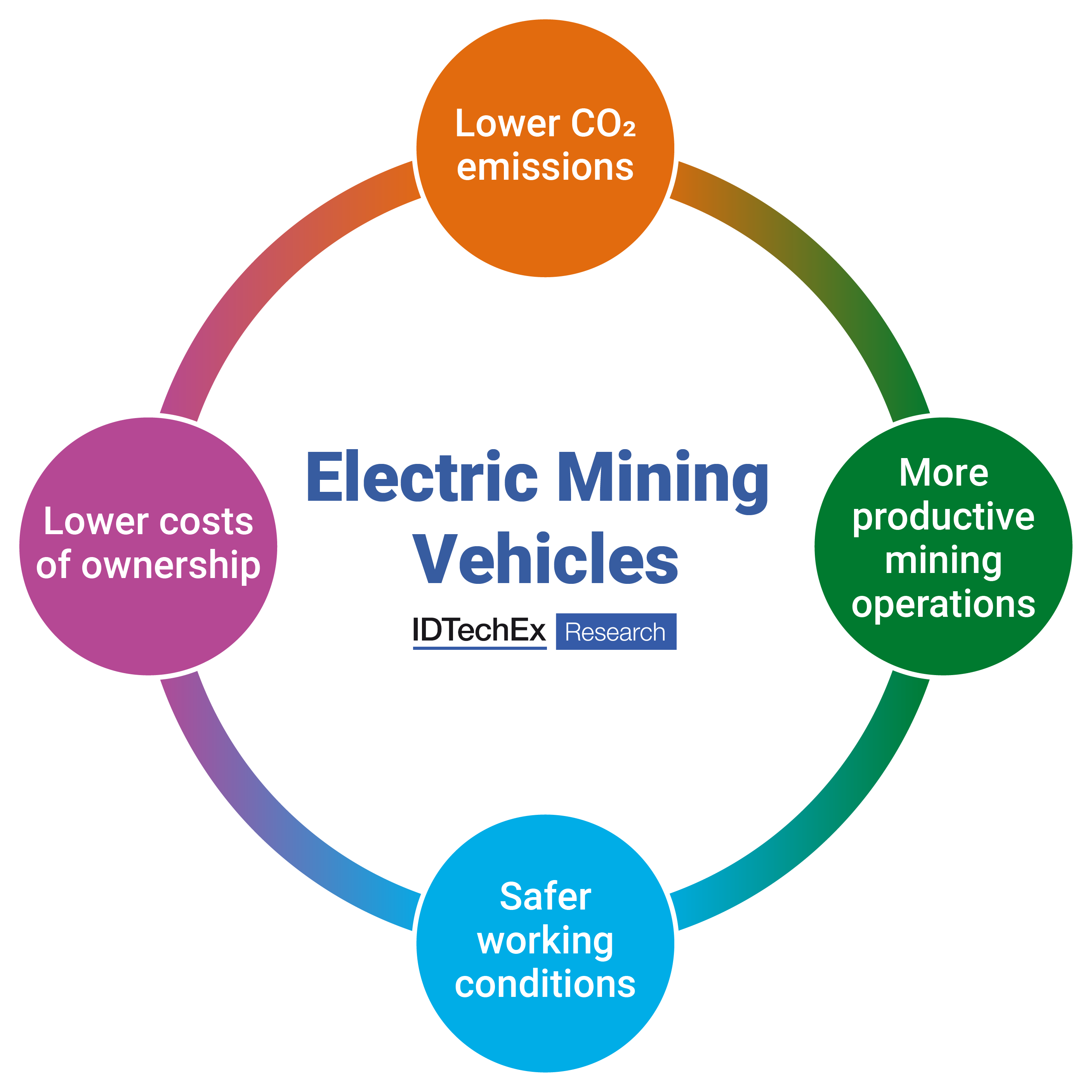IDTechEx finds EVs will make mining cleaner and cheaper
The mining industry has always been perceived as a high-emitting and resource-heavy industry – one that contributes 2-3% of all global CO2 emissions.
However, within the last few years, the industry has followed the path of other vehicle sectors and embraced electrification. The use of EVs in global mining is on the rise and could be set to change attitudes towards the industry at large.
The new IDTechEx report, ‘Electric Vehicles in Mining 2024-2044: Technologies, Players, and Forecasts’, finds that the electric mining vehicle market is on the cusp of rapid growth, with a 20-year CAGR of 38% forecasted.
Electric vehicles offer multiple benefits over traditional combustion engines, including emissions, economics, safety, and productivity. This article by Pranav Jaswani, Technology Analyst at IDTechEx will explore these factors to demonstrate why mining companies and vehicle manufacturers have been so keen to embrace electrification.

Key benefits of electric mining vehicles. Source: IDTechEx
GHG emissions
It is widely known that transitioning from ICE automobiles to EVs provides the benefit of zero CO2 emissions at the point of use. This benefit is even more pronounced when it comes to mining vehicles. Of all the emissions produced by the global mining industry, 40–50% is derived from the diesel combustion engines of vehicles.
The global haul truck population, numbering just over 55 thousand, emits 174 megatonnes of CO2 annually – the same as almost 38 million road cars. The introduction of electric haul trucks and other electric mining vehicles creates huge potential for the decarbonisation of mining and allows mining companies and OEMs to meet their individual emissions targets.
Miner health and safety
Diesel combustion engines significantly compromise local air quality, emitting NOx and particulate matter that are hazardous to worker safety. In an underground mine, miners and vehicles can spend entire working days in close proximity in a confined tunnel. Transitioning to EVs will minimise workers’ exposure to pollutants and deliver short- and long-term health benefits.
Working in mines also means working under exposure to high heat, noise, and vibration – all of which pose further safety risks and are made worse by diesel vehicles. Electric mining vehicles produce far less noise and vibration to contend with and generate over 75% less heat than their diesel counterparts. From a health and safety standpoint, EVs are far superior to incumbent mining machines.
Mining productivity
Due to the use of electric motors, electric mining vehicles can achieve improved torque and acceleration, higher average speeds, and better performance when traveling on grades (as much as 50% faster on steep grades). Loaders specifically benefit further from the improved torque through smoother loading and faster load times. All these factors come together to result in faster vehicle cycles, increasing mining productivity by 10–20%.
The bottom line
Most crucial to the adoption of electric mining vehicles is the significant reductions they offer in total cost of ownership. EVs will come at a considerable premium due to the added costs of batteries, but battery pricing in the mining industry has been coming down and given that volumes of electric mining equipment are expected to grow, there is room for it to fall even further.
The most potent savings that electrification provides comes from eliminating diesel costs. IDTechEx has calculated that the diesel costs to operate a haul truck and an underground vehicle can be over $8.5 million and $1.5 million, respectively, over 10 years. For an EV alternative, the electricity costs needed are as low as $3.1 million and $350 thousand. EVs can create massive opportunities for mines to save millions per vehicle, and they will naturally be inclined to extend these benefits over their fleets at large. Vehicle economics are also less sensitive to electricity prices than diesel prices, affording companies a level of protection against price volatility.
Adding to this are the operational costs saved through reductions in maintenance. Replacing the mechanical driveline of mining vehicles with electric ones brings with it fewer moving parts and less maintenance. Vehicles demand less downtime and resources for repairs and can spend more time in operation.
The new IDTechEx report provides deeper analyses and quantification of these key cost factors in electrification and analyses over 70 electric mining vehicles from OEMs, including Caterpillar, Komatsu, Sandvik, Epiroc, and XCMG. It finds that electrification of mining vehicles will be favourable from a total cost of ownership perspective over a wide range of vehicle types. Mining companies will be encouraged to switch over by the savings they can provide and the improvements to working conditions – while OEMs will ramp up production to meet this demand.









